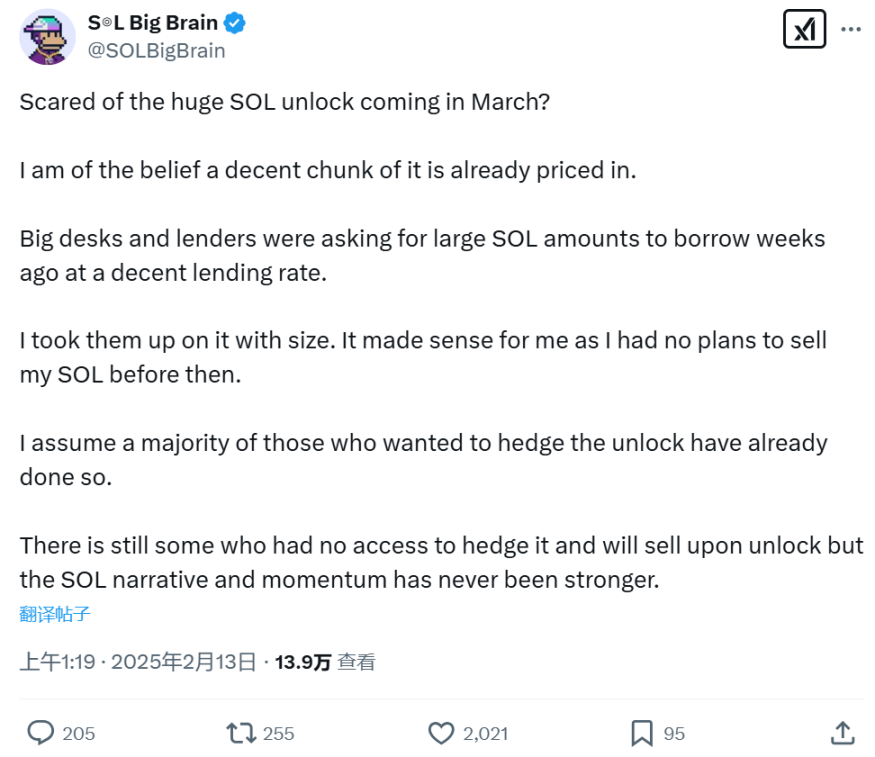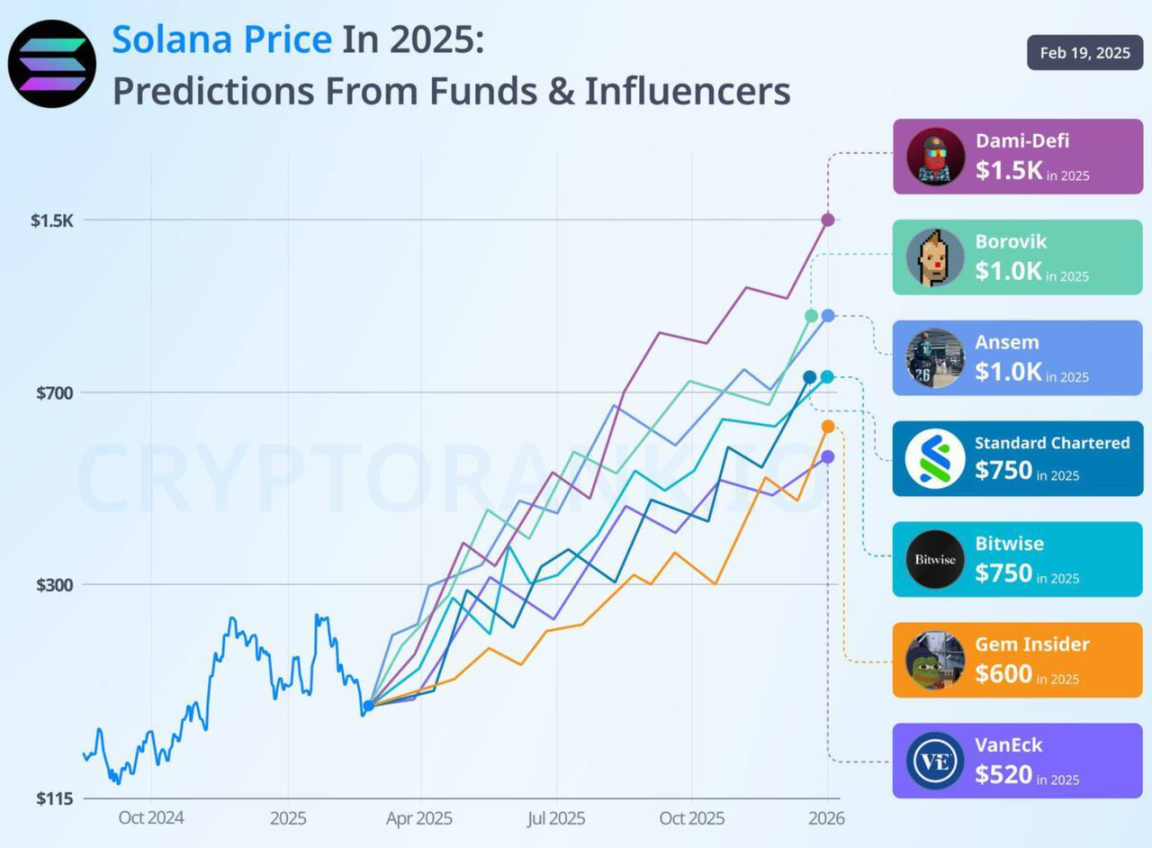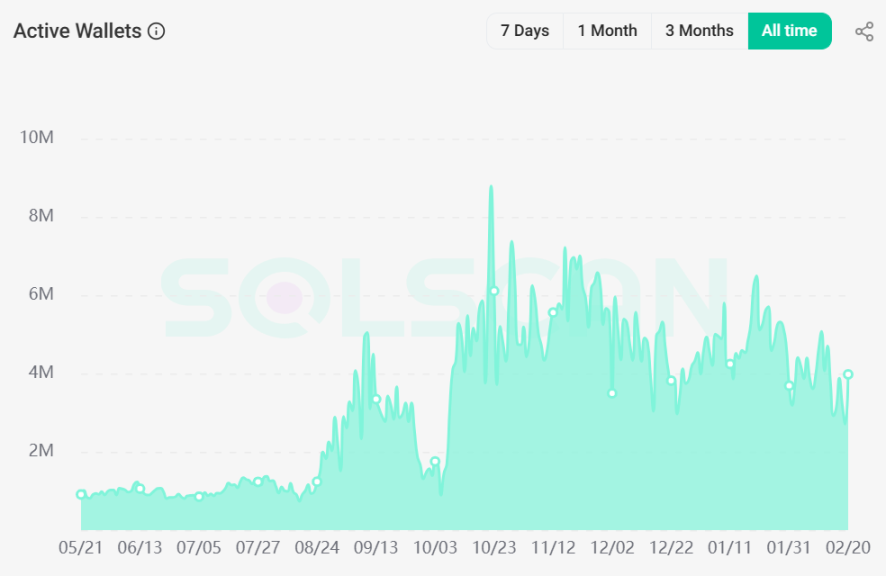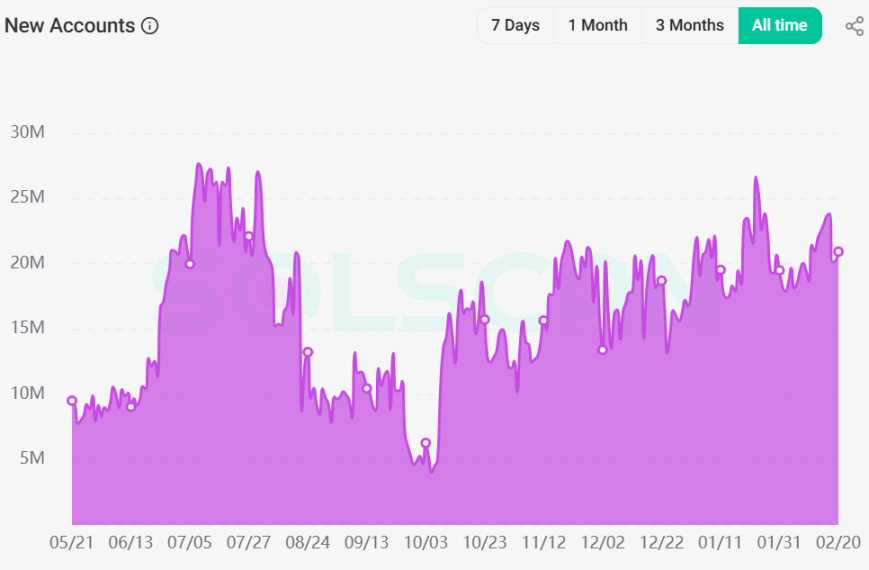This article will discuss the impact of this incident from multiple perspectives such as unlocking background and potential market impact.
Author: 1912212.eth, Foresight News
On March 1, 11.2 million SOL pieces from FTX bankruptcy auction will be unlocked, worth US$2.06 billion. The number of tokens unlocked accounts for about 2.29% of the current SOL circulation supply.
With such a huge selling pressure coupled with sluggish market conditions, the SOL currency price performed quite sluggish. Since January this year, when the Trump TRUMP concept coin triggered a market frenzy, SOL once hit its all-time high of US$295, and then fell all the way. The current weekly line has been falling for four years, with the lowest falling to around US$160. Is it Solana’s turn to get FUD?
This article will discuss the impact of this incident from multiple perspectives such as unlocking background and potential market impact.
Background of FTX bankruptcy and SOL unlocking
The bankruptcy of FTX is one of the most iconic events in cryptocurrency history. In 2022, this former industry giant collapsed due to the rupture of the capital chain and poor management, and then entered bankruptcy liquidation procedures. As early investors in the Solana Ecosystem, FTX and its affiliated company Alameda Research hold a large number of SOL tokens. FTX holds a total of approximately 41 million SOLs, most of which are locked, and the unlocking time is distributed between 2025 and 2028. In order to repay creditors, the FTX bankruptcy management team sold these lock-up tokens in advance through auction and attracted institutional investors to participate at a significantly discounted price.
The 11.2 million SOLs unlocked this time were part of the previous auction. The main institutions involved in the purchase include Galaxy Digital, Pantera Capital and Figure. Among them, in 2024, Galaxy purchased 25.52 million SOL units at a price of US$64 each, Pantera and others purchased 13.67 million units at US$95, and Figure and others purchased 1.8 million units at US$102. These institutions started at prices well below the market price at the time. Even if the SOL price fell to around $170, the paper profits were still considerable.
Potential impact of selling pressure
The 11.2 million SOL units are equivalent to 2.29% of Solana’s current circulation supply (approximately 488 million units) and are worth more than US$2 billion. For assets with a daily trading volume usually between US$1 billion and US$2 billion, the inflow of these unlocked tokens may undoubtedly cause market turmoil. If these tokens are sold off quickly, an oversupply situation in the short term could depress the price of SOL, triggering panic selling among investors, exacerbating the downward trend.
The extent of market influence depends on the behavior of the holder after unlocking. The buyers of these tokens are mostly experienced institutional investors who bought them at low prices during auctions and are currently making quite rich book profits. If they choose to cash out immediately after unlocking, selling pressure will increase significantly. But from another perspective, these institutions have held positions for several months or even years during the lock-up period, showing a certain willingness to invest in the long term. VanEck investor Matt Maximo has revealed that some buyers he knows have made it clear that the goal is to pursue higher returns rather than short-term arbitrage.
In addition, SOL’s recent price performance also provides some clues to market sentiment. Since FTX went bankrupt, SOL prices have soared from a low of $22 to the current level of more than $170, an increase of more than 700%. Despite the recent market correction, the overall trend still shows strong support.
What is the probability of market panic?
Whether selling pressure will trigger market panic depends largely on investors ‘psychological expectations and the market environment. Some users expressed concern about this unlock, believing that the $2 billion selling pressure may break through the trend line, causing prices to drop further. However, there are also views that the 2.2% increase in liquidity is relatively limited, and most SOL has already changed hands in the market many times, so the actual impact may be exaggerated.
Encrypted KOL SOLBigBrain, which once got on the bus near US$20, said that some of it has already begun to be included in the price. Although some people will choose to sell it after unlocking it, the narrative and momentum of SOL are still quite strong.

At present, some funds on social platforms and KOL are generally optimistic about SOL’s currency price performance this year, and quite a few even believe that SOL will exceed US$700 this year.

From historical experience, large-scale unlocking events do not always lead to market crashes. For example, when FTX was approved to sell US$100 million in crypto assets a week in 2023, the market did not fall significantly, but gradually absorbed selling pressure. On January 7, 2021, SOL unlocked 362 million tokens, accounting for 55.7% of the largest supply. At that time, the coin price was around US$3 and hit a record high of US$259 in November 2021.
Generally speaking, the negative effects of unlocking will ferment one month before the official unlocking, and will be exhausted after the unlocking is completed, and may even rebound at some time. Take ONDO as an example. In mid-January this year, it ushered in a huge unlock and has fallen all the way since it hit the top in December 2024. However, after the unlock was officially completed, there were no market behaviors such as so-called panic selling. Instead, the currency price continued to fluctuate within a certain range. This time, despite the larger SOL unlock, the institutional nature of participants and high profit buffers may weaken the incentive to sell.
Solana fundamentals remain strong
The fundamentals of Solana’s ecology itself also resist potential risks to a certain extent. As a high-performance public chain, Solana has attracted a large number of developers and users in recent years for its low transaction costs and high throughput. In the past year, Solana has been highly sought after and cheered by the market for its meme wave and AI concept coins. The wealth effect on its chain has also attracted many users.
According to solscan data, the total supply of USDC in the chain currently reaches 9.6 billion USDC and 2 billion USDTs, and the number of PYUSD has also risen to around 150 million. The number of independent address Holders also reached 3288566, and the total number of active pledged SOLs reached 390.2 million. Although the number of active wallets has declined, it remains at a high level.

The number of new accounts also remained high.

conclusion
Overall, the unlock of SOL worth more than $2 billion on March 1 will undoubtedly cause a certain degree of selling pressure on the market, but the possibility of triggering a full-scale panic is relatively low. The rational decision-making of institutional investors, the digestion ability of the market and the resilience of the Solana ecosystem will all become key factors in buffering this impact. For investors, paying attention to price movements and trading volume changes after unlocking, and formulating strategies based on their own risk tolerance will be the best way to deal with this incident. On the stage full of changes in cryptocurrency, opportunities and challenges coexist, and the story of SOL is obviously not over yet.



